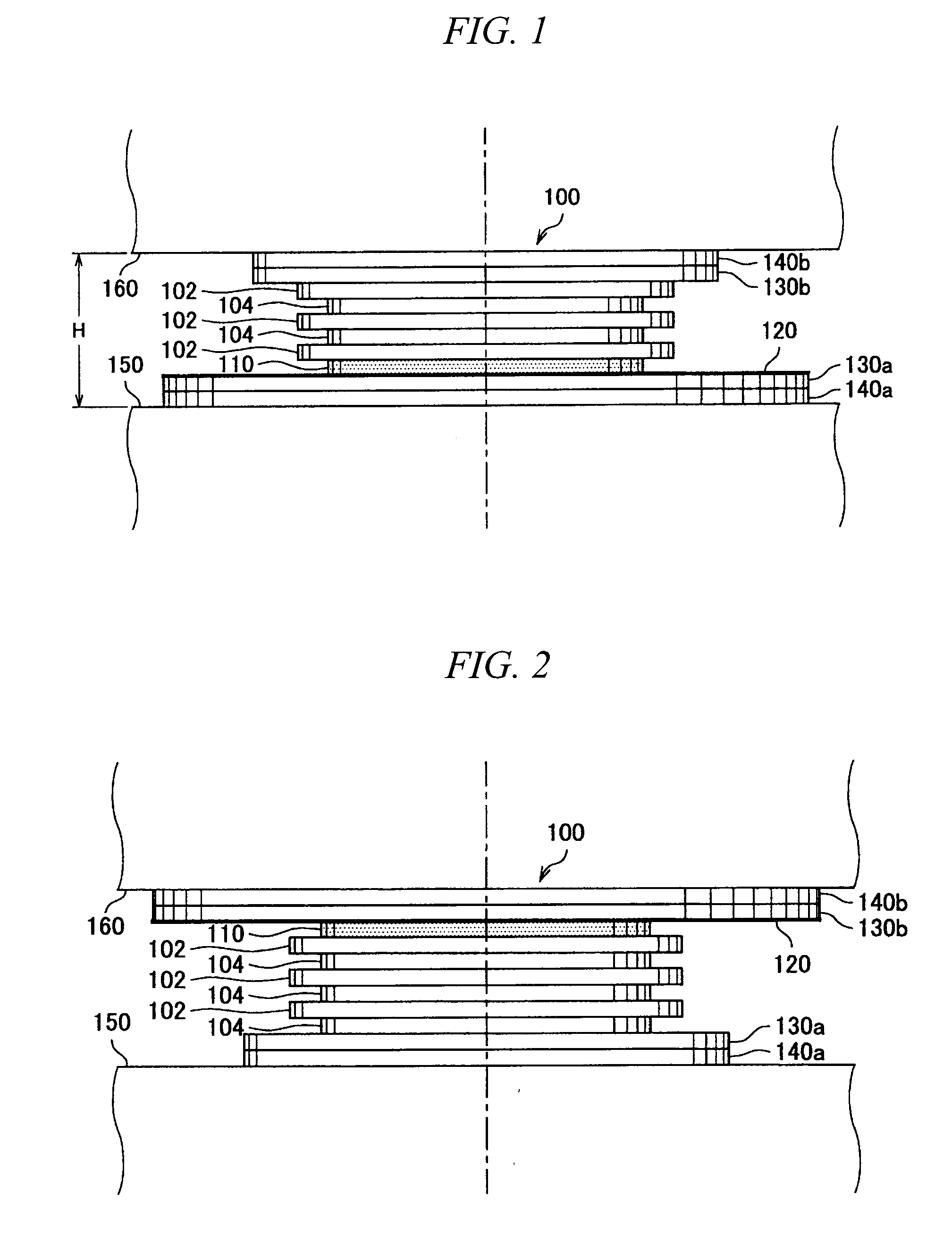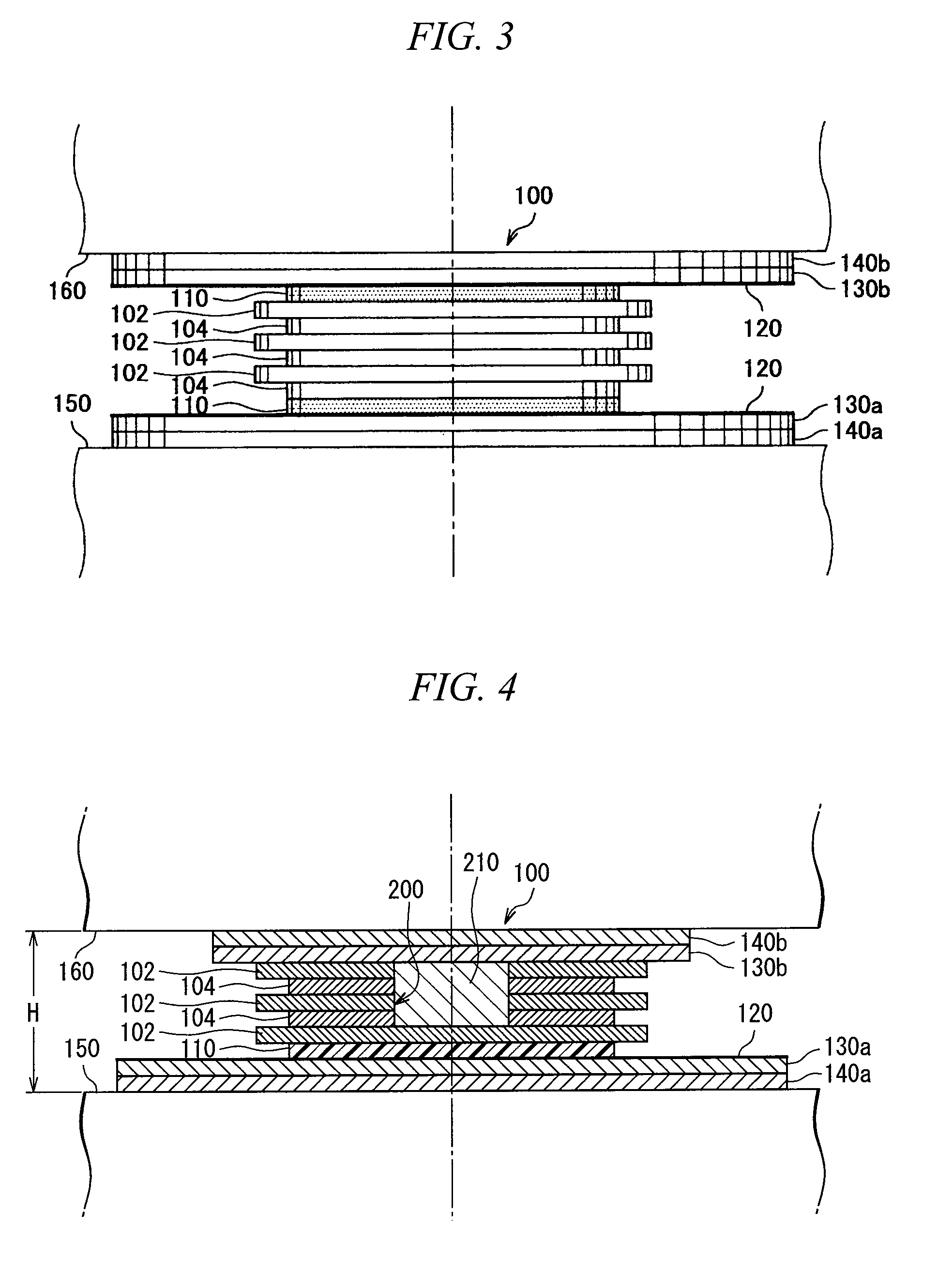Sliding-type laminated plate bearing and structure
a technology of laminated plates and bearings, which is applied in the direction of linear bearings, mechanical equipment, shock-proofing, etc., can solve the problems of inclination of the upper construction body, and local deviation of the rubber plate and steel plate, so as to increase the deformation capacity, and reduce the effect of frictional attenuation
- Summary
- Abstract
- Description
- Claims
- Application Information
AI Technical Summary
Benefits of technology
Problems solved by technology
Method used
Image
Examples
embodiment 1
Behavior of Embodiment 1
[0051]Next, an explanation will be given for behavior of the laminated rubber isolator 100 of the present embodiment when an external force such as a seismic force is input into the laminated rubber isolator. FIG. 5 and FIG. 6 are side views showing the behavior of the laminated rubber isolator of the present embodiment. The constitution of the laminated rubber isolator 100 given in FIG. 5 and FIG. 6 is the same as that of the laminated rubber isolator 100 given in FIG. 1.
[0052]At the occurrence of a small or medium-sized earthquake, the rubber plate layer 104 undergoes an elastic deformation, thereby allowing the laminated rubber isolator 100 to incline as shown in FIG. 5, and vibrating a structure. The rubber plate layer 104 is elastically deformed to lengthen the period characteristics, thus making it possible to reduce the seismic force. FIG. 5 shows a state in which the upper side of the laminated rubber isolator 100 is moved only by a length L1 from its...
embodiment 2
Behavior of Embodiment 2
[0070]Next, an explanation will be given for the behavior of the laminated rubber isolator 200 of the present embodiment when an external force such as a seismic force is input into the laminated rubber isolator.
[0071]At the occurrence of a small or medium-sized earthquake, the rubber plate layer 104 and the rubber plate layer 204 undergo an elastic deformation, thereby allowing the laminated rubber isolator 200 to incline, and vibrating a structure. The rubber plate layer 104 and the rubber plate layer 204 are elastically deformed to lengthen the period characteristics, thus making it possible to reduce the seismic force. Here, since the frictional force between the PTFE plate layer 110 and the stainless steel plate layer 120 on the basis of the friction coefficient μ1 is greater than the seismic force, no sliding movement (slippage) is caused between the PTFE plate layer 110 and the stainless steel plate layer 120.
[0072]On the other hand, at the occurrence ...
PUM
 Login to View More
Login to View More Abstract
Description
Claims
Application Information
 Login to View More
Login to View More - R&D
- Intellectual Property
- Life Sciences
- Materials
- Tech Scout
- Unparalleled Data Quality
- Higher Quality Content
- 60% Fewer Hallucinations
Browse by: Latest US Patents, China's latest patents, Technical Efficacy Thesaurus, Application Domain, Technology Topic, Popular Technical Reports.
© 2025 PatSnap. All rights reserved.Legal|Privacy policy|Modern Slavery Act Transparency Statement|Sitemap|About US| Contact US: help@patsnap.com



